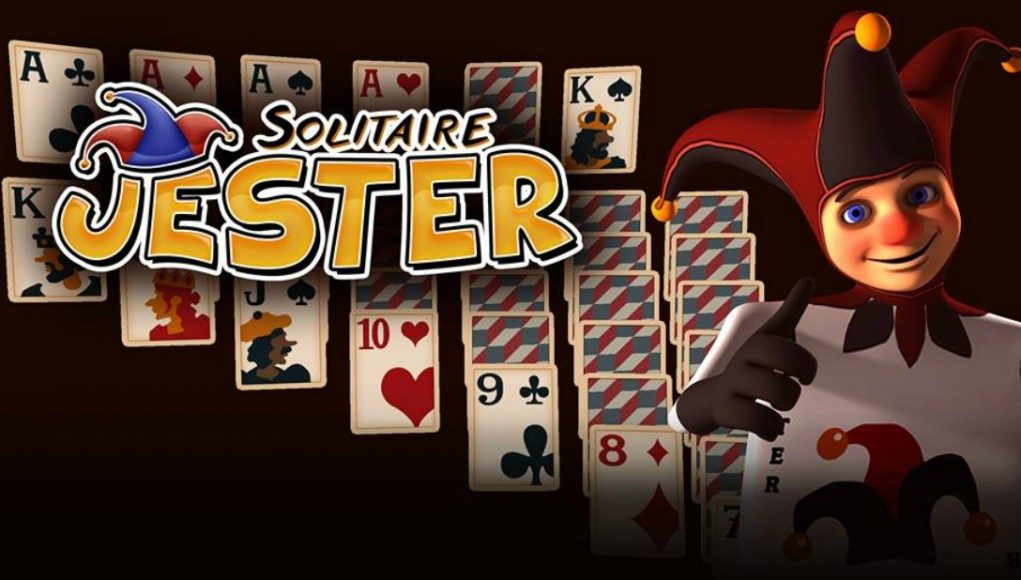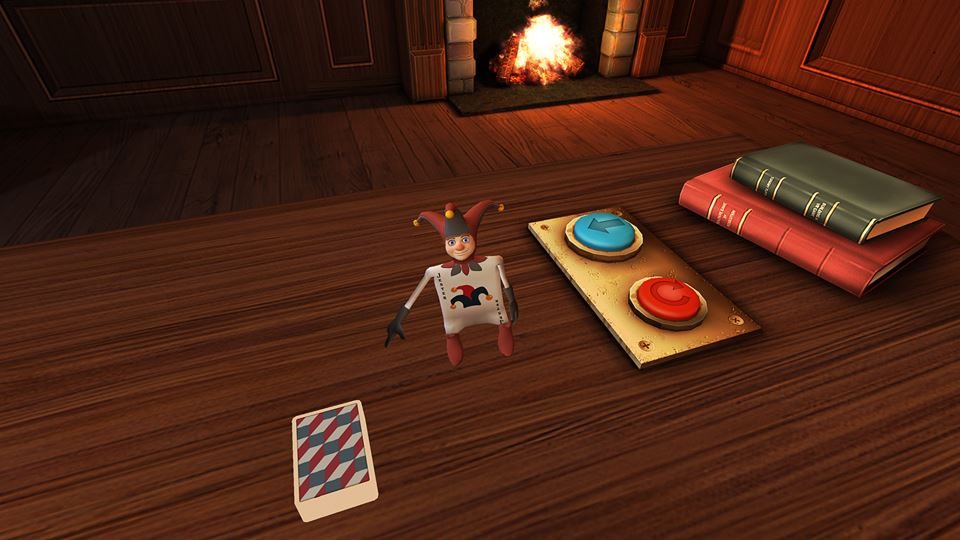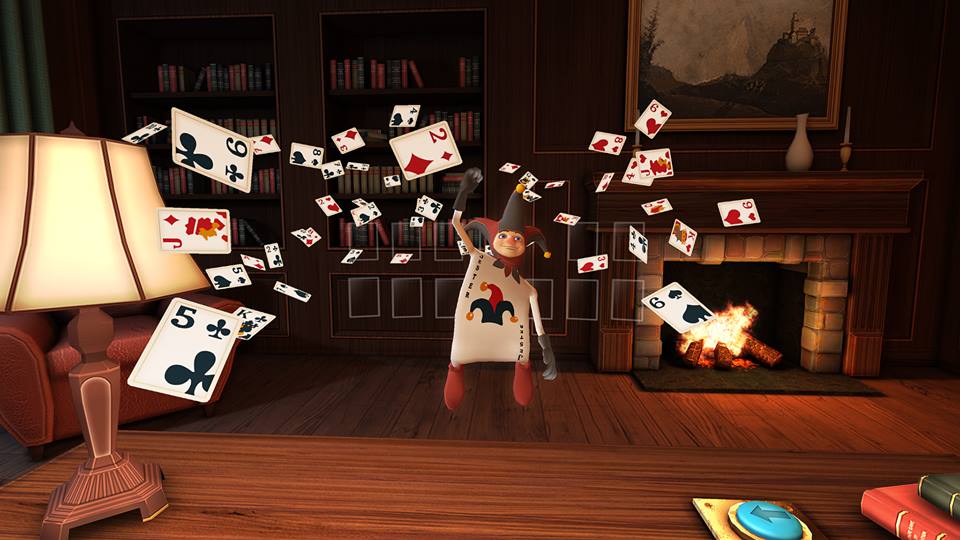Resolution Games, a VR games studio founded by Candy Crush Saga creator Tommy Palm, launched their first VR title on the Gear VR store recently, a 3D rendered solitaire game called Solitaire Jester.
You find yourself sitting at a desk in your personal Edwardian study, an inviting space that’s warmly lit by the dancing flames of the open fireplace and the diffuse light of a antique brass lamp. Then suddenly a little man pops out of the corner of your eye, a floppy-hatted cartoon jester with a wry smile on his face. You’d be forgiven at this point if you thought you’d gone insane, but no, our little jester friend is only here to help you play a game, nudging you playfully to gaze at the deck of cards so the session can begin.
Featuring the tried and true gameplay of Microsoft Solitaire (1990), Resolution’s Solitaire Jester offers the basic meat-and-potatoes experience combined with a beautifully designed room that acts as a calming backdrop.
See Also: ‘Keep Talking and Nobody Explodes’ Comes to Gear VR Store, PC Release Later This Year
“We’re very excited about Solitaire Jester as even though it is a simple game, it still shows the amazing sense of presence and graphic quality on today’s VR devices,” said Tommy Palm, co-founder and CEO of Resolution Games. “Solitaire Jester is one of the few games across several genres we are already working on. We’ll be releasing additional titles in the coming months that are all aimed at helping a wide audience of players relax and entertain themselves in VR.”
But don’t strap in for an hour-long session just yet, because although Solitaire Jester seems like the perfect getaway for the endlessly halcyon rounds of solitaire ahead, your neck may start grumbling only after 30 minutes if you’re not careful.
The repetitive, fine head movements required to move cards from one stack to the next personally gave me a minor neck ache the first time I played—pretty much accomplishing the exact opposite of the classic card game’s intended effect. I am however a special case. I’ve never been a fan of gaze-based games that have you using your head as a pointing tool for this exact reason, so its possible I walked in prepped for neck strain. So I decided to put it down, relax my neck for a day, and retry the following morning.
Strapping back into my Gear VR and into the game the next morning (which resumed automatically from where I left off), I immediately zeroed back into the zen flow of sequentially matching cards, ordering them into their tidy columns. After a few minutes the tenseness returned, and pushing through the growing discomfort I noticed that I was selecting cards as fast as humanly possible, staring at the three of spades and the eight of hearts for the absolute minimum amount of time and automatically moving them to their destinations.
Too fast and too much for too long. I was trying to play solitaire the way I always play solitaire, by running through it at high speed until losing too many times and eventually quitting—a result of an early childhood full of habits formed while visiting grandparents and playing hours of solitaire (the only game besides Minesweeper on their then ancient desktop).
If there’s one thing we’ve learned about VR is that the human body is especially sensitive to unnatural input and control schemes. And although head-controlled mice and other forms of hands-free peripherals have existed for some time now, the people that use them are often times left with no other choice. These people have learned to use them and have also likely created strategies to mitigate the ill effects of using the neck as a fine pointing device, something it is clearly not designed to do.
In the end, I really enjoyed Solitaire Jester, despite the tautness of the muscles holding up my brain case—sublimated by the added fact that the game is free (which doesn’t hurt). Taking it slower and relaxing a little bit while I play from now on has made the game much more enjoyable, though it stands as a prime example of the need for further development of VR input and input design.











